Egypt’s Archaeological Sites: Top 6 Places to Visit
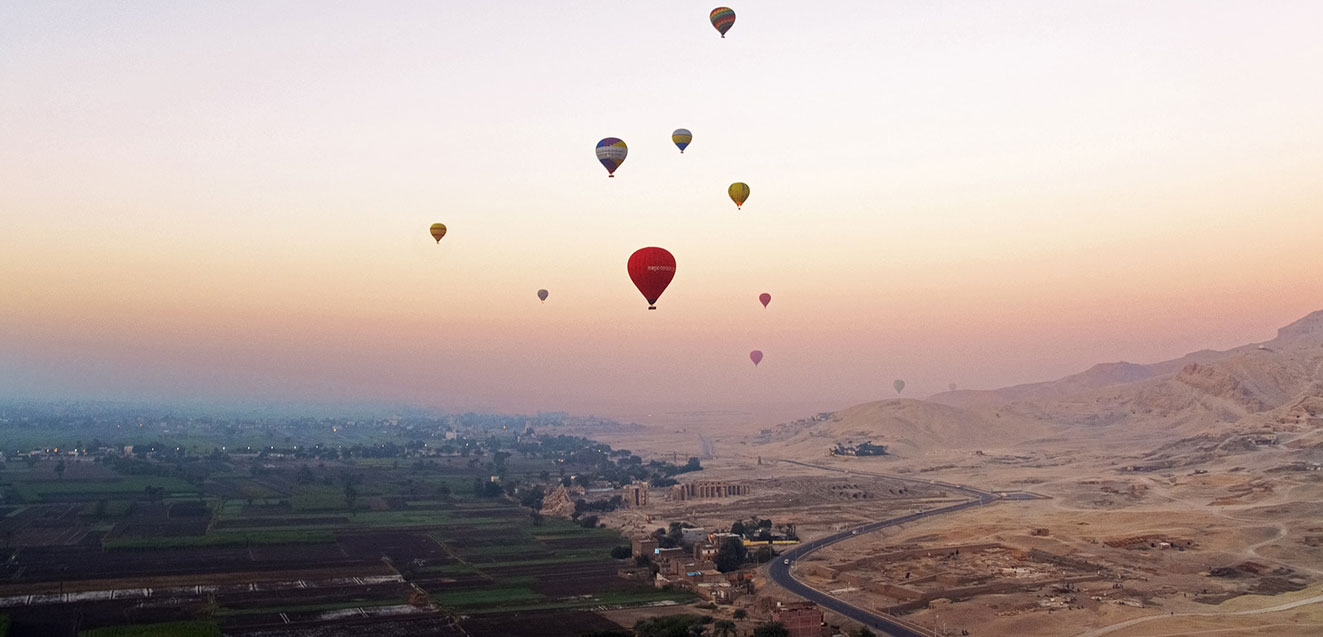
Known for its towering pyramids, vast temple complexes, and mysterious tombs, Egypt offers an abundance of archaeological riches. Deciding among dozens of “don’t miss” archaeological sites and choosing a qualified Egyptologist to decipher them all for you can be daunting. So, we’ve created this list of destinations — specifically, where to visit in Egypt for ancient archaeology — to kick off your trip planning.
1: The Pyramids
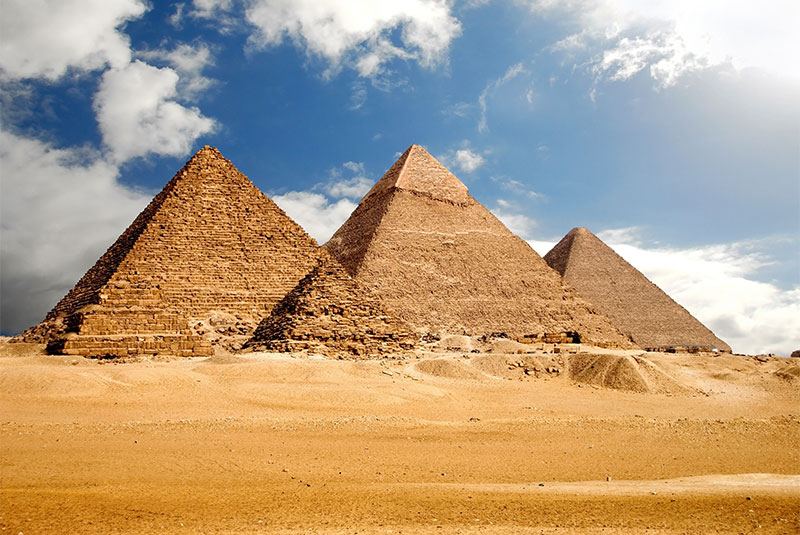
On the outskirts of Cairo stand Egypt’s most famous pyramids, towering above the skyline like colossal portals into the past. In fact, the Giza Pyramid Complex is home to some of the most enormous structures ever built, and the oldest and largest of them—the Great Pyramid—is one of the Seven Wonders of the Ancient World. Enjoy one of GeoEx’s special access visits inside these tremendous structures. Though there’s not much to see inside the Great Pyramid, the narrow passages of that icon provide an unforgettable Indiana Jones moment, and the opportunity to stand between the paws of the Great Sphinx of Giza, typically cordoned off to the general public, is quite simply unparalleled.
While lesser-known, a visit to the older pyramids of Saqqara and the royal desert necropolis, Dahshur, will help put the progression of pyramid building techniques—which culminated at Giza—into perspective.
2: Abu Simbel Temples
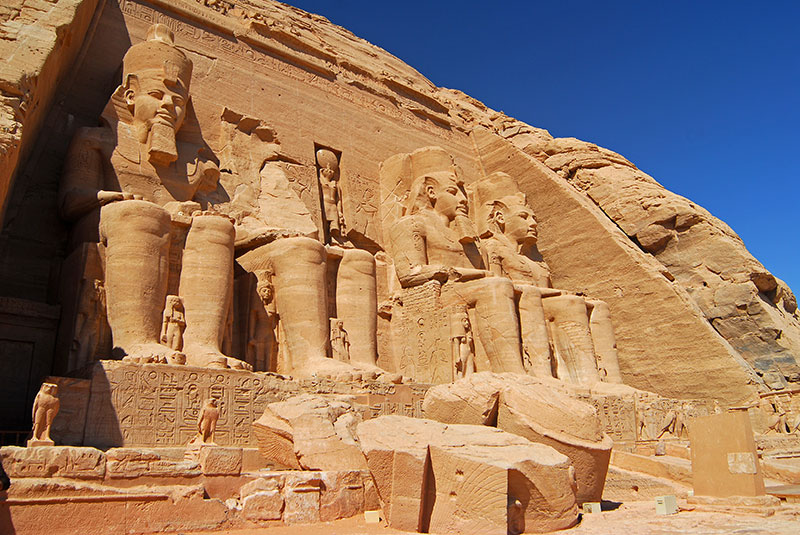
Crowds flock to this imposing monument, rising from the sands of southern Egypt’s ancient Nubian Valley, and for good reason: the complex of Abu Simbel is truly a sight to behold. The story of how UNESCO relocated these two rock-carved temples, block by block, when the rising waters of Lake Nasser threatened their existence, is almost equally as impressive. Pharaoh Ramses II built these gigantic structures in the 13th century BCE, and the overall complex includes both The Great Temple at Abu Simbel, with its intricately carved pillars and floor-to-ceiling hieroglyphics depicting the pharaoh’s own victorious battles, and a smaller temple honoring Ramses’ queen, Nefertari. Here you will also find a series of statues depicting the ancient ruler and his family.
3: Kom Ombo Temple
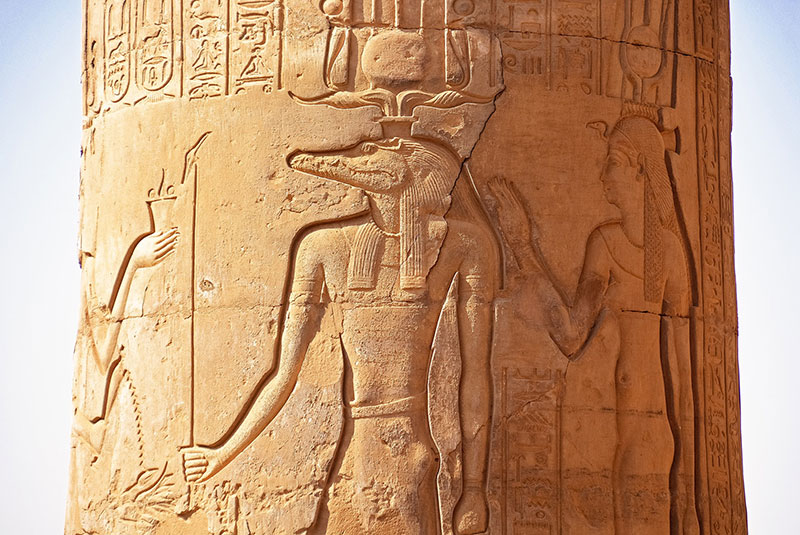
Perched along the banks of the Nile is this unique “double temple,” a symmetrical space dedicated to two different entities: Sobek the crocodile god, and Horus the Elder. Although the site is smaller in stature than Abu Simbel, the hieroglyphics here are much more intricate and detailed, and the temple’s manageable size makes it far simpler to digest. Of course, its dramatic location at a bend in the Nile only adds to its overall allure. Just outside the temple complex stands the Crocodile Museum, a small, air-conditioned space of mummified crocodiles, crocodile coffins, and wooden sarcophagi, as well as other unique treasures. It’s all right there at your fingertips—an ease of accessibility you won’t often find in Egypt’s larger, more crowded spaces.
4: Philae Temple Complex
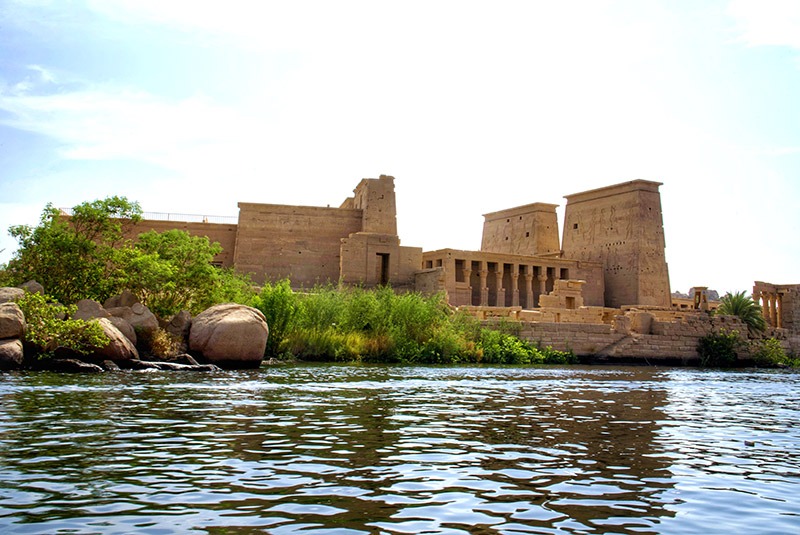
Another temple complex known for its intricate detailing is Aswan’s Philae Temple. Like Abu Simbel, UNESCO relocated this ancient center for the cult of the goddess Isis piece by piece—from its original location on Philae Island—after the flooding of Lake Nasser. Today, traditional feluccas carry visitors to its new home on Agilkia Island, where most start their discovery with the Temple of Isis, the oldest structure in the complex, dating back to around 690 BCE. It’s also the last temple built in the classical Egyptian style, complete with Ancient Egyptian hieroglyphics.
Philae Temple is home to a large population of temple cats, for which it’s gained some notoriety on both Facebook and Instagram. These furry felines tend to lounge around like Bastet, the Egyptian cat goddess, among the ruins.
5: Valley of the Kings and Queens, Luxor’s West Bank
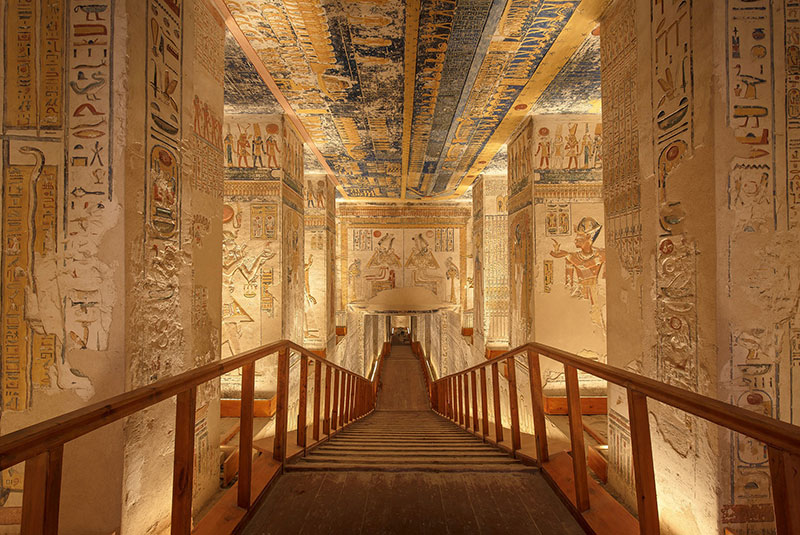
The West Bank of Luxor is a bounty of archaeological treasures. In fact, what was formerly known as the “Great and Majestic Necropolis of the Millions of Years of Pharaoh, Life, Strength, Health in the West of Thebes” (bit of a mouthful), houses more than 60 incredible royal tombs in the Valley of the Kings, a royal burial ground for pharaohs (including Ramses II), and about 75 more tombs in the Valley of the Queens. These include the Tomb of Nefertari, one of the most exquisitely decorated tombs in existence—complete with colorful paintings of winged goddesses and hieroglyphics depicting the journey to the afterlife.
Unfortunately, looting, floods, and the effects of mass tourism have led to the tombs’ erosion and deterioration, so there’s now a rotation system to enter them. This means that only a limited number of tombs are open to the public at any one time. But while typical entry tickets gain access to three tombs, GeoEx guests are allowed entry to a few more. Depending on government restrictions and ongoing archaeological/restoration projects, we can also arrange special tomb entries, including to that of Nefertari.
To maximize our experience, we at GeoEx like to visit the valley either earlier in the day or later in the evening, when the crowds are thinner and the sun less harsh.
6: Karnak and Luxor Temples
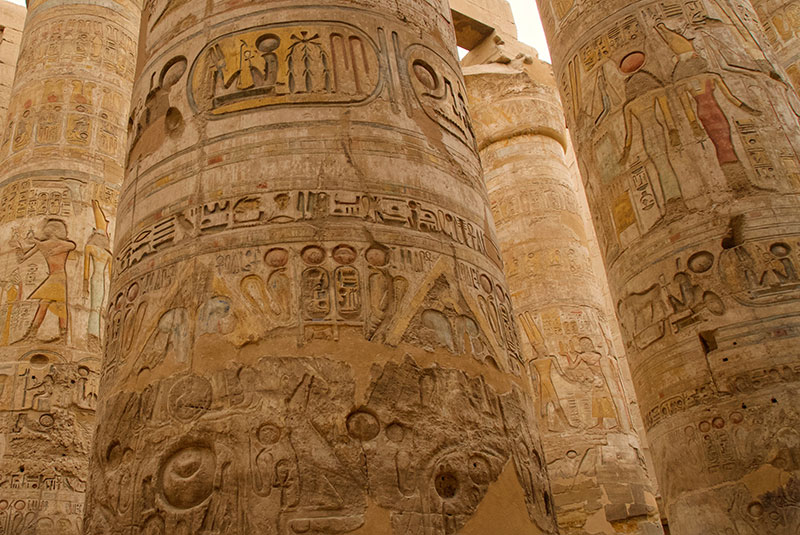
Sure, they’re crowded, but visiting Egypt without experiencing these temple complexes would be like visiting Paris without seeing the Eiffel Tower. Located along the east bank of Luxor, across the Nile from the Valley of the Kings and Queens, Karnak is a complex of temples, chapels, kiosks, pylons, and more developed over 1,300 years. At its heart is the great Temple of Amun-Ra, the earthly home of the local god, and one of the largest religious structures ever built. While smaller and less complex than Karnak, Luxor Temple is equally as splendid. Unlike the former, which was built as a cult temple for the worship of gods, Luxor served as a ceremonial space for the crowning of pharaohs. Between them stands the Avenue of Sphinxes, a spectacular walkway that following years of excavations and restorations is one of Egypt’s newest open-air museums.
Visiting these together makes a wonderful day trip, though you should be sure to stick around for the evening Karnak temple sound and light show, a brilliant and colorful display highlighting the history of ancient Luxor.
* * * * *
Are you ready to start planning your trip to Egypt? Our experts can craft an adventure that takes in the top places to visit for ancient history and archaeology.
To complement our recommendations for ancient history, we’ve also created a list of cultural destinations where you can meet the people and experience Egyptian culture.

